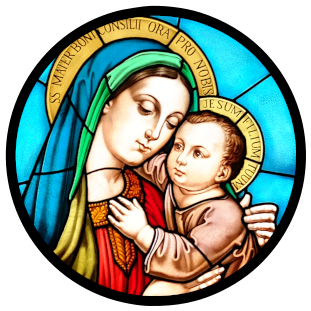Proclaiming the Word of God: An Introduction
Essential Materials
- Lectionary
- Book of the Gospels
- Intercessory Prayers/ Prayer of the Faithful
- Some Readers may find it helpful to have their own personal Daily and Sunday Lectionary. The Daily and Sunday Readings are available on the Homepage of this website.
Approaching the Text
Preparation is the key to success and being a competent Minister of the Word is no different. By allowing one’s self the time to read and reflect upon a given passage of Scripture, a minister of the Word is opening themselves and the congregation up to the message of God encapsulated within the texts.
It is essential that before proclaiming the text before a wider audience one must complete the following steps …
I. Prepare it.
II. Reflect over it.
III. Understand it.
IV. Portray it.
To read and minister well, the reader should pray and reflect carefully on God’s word. He/she should do their best to develop a warm, loving and open relationship with the Scriptures.
The Ambo
The ambo, or lectern as it is often referred is the place from which the Scripture readings, Homily and Prayer of the Faithful are read and also from where the responsorial psalm is sung.
This precise location preserves the dignity and sacredness of the Word of God. The ambo is considered
a suitable place for announcing God’s message so that the attention of the people may be easily directed to that place during the Liturgy of the Word.
(GIRM 272)
The ambo should be reserved specifically for proclaiming the Word of God and recitation of the Psalm. In cases where other singing / cantoring or announcements must be made, a simple moveable stand (which must not visually compete/ distract from the ambo or Liturgy) is preferable.
Presenting yourself at the ambo
Walk at a moderate pace whilst approaching the sanctuary area.
Gracefully reverence the Lectionary which is placed on the Ambo with a bow.
Breathe deeply to aid relaxation.
Stand attentively, but not rigidly.
Avoid any sudden movements as they will distract your attentive congregation.
Make eye contact with the congregation before beginning to read.
Body Language
Our bodies as well as our voices can impact the direction of a congregation. Body language includes the movement of ones arms, upper body and facial features. Our bodies must be aware of our liturgical surrounds and aware that at all times that the glare of a congregation is upon us. Therefore, we aim to lead by example. All movements of a Minister of the Word should be done slowly and with much careful thought.
Any sudden or erratic movements could lead to a break in either concentration or prayer of the assembled. All movements must be measured appropriately, for instance, those who minister in larger churches or Cathedrals must elaborate their movements or gestures or elevate their volume.
Distractions related to body movement may sometimes emerge. These can include forms of restless fidgeting that some readers may experience due to nervousness. There is unfortunately no specific method for alleviating these habits.
To overcome them, Ministers of the Word must become comfortable within their surroundings, their reading and their ministry. This can only be achieved through …
- Practice.
- Familiarity/ Understanding of the text.
- Experience.
Facial expression and eye contact are also intrinsic to the successful deliverance of a scripture passage. It is a well known fact that good, animated facial expressions along with eye contact can have a powerful effect on those present.
Projecting the Voice
Speak Slowly – Approximately half the rate of normal speech.
Speak Loudly – Ensure that your sound is reaching all areas within the Church.
Speak Clearly – Avoid muttering.
Speak directly – To all the members within the congregation.
Breath Control – Breathing deeply can help to calm ones nerves and also to regulate their rate of speech.
Avoid coughing – Coughing into a microphone can also be very off-putting to listeners.
Read from the Book rather than to the Book – One should try to keep their head elevated.
On The Day
- Arrive Early.
- Familiarise yourself with the layout of both the church and Liturgy. (eg: Where the Microphone switch is and how to adjust it.)
- Greet the priest and other ministers (including other readers and psalmists.) – Ask if there are any changes to the Liturgy (eg: Will the psalm be sung? Or is there a deacon present to read the Prayer of the Faithful?)
- Make sure the Lectionary is placed on the ambo and that the coloured ribbons have firmly secured the page from which you will read

